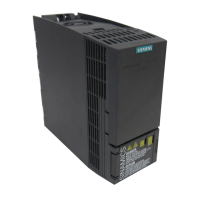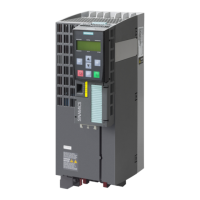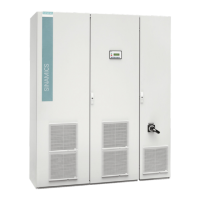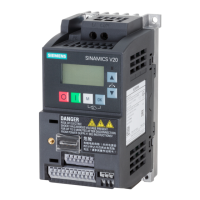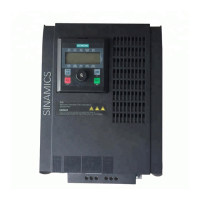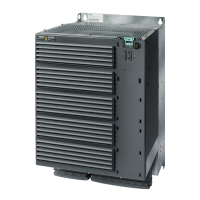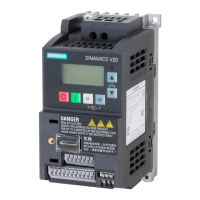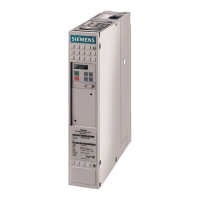Faults and Alarms
Faults and Alarms – Overview
3-654
© Siemens AG 2011 All Rights Reserved
SINAMICS G120 Control Units CU230P-2 Parameter Manual (LH9), 01/2011
3.1 Faults and Alarms – Overview
3.1.1 General information
Indicating fault and alarm messages (faults and alarms)
A message comprises a letter followed by the relevant number.
The letter characterizes the message type and has the following meaning:
• A means "Alarm"
• F means "Fault"
• N means "No Report" or "Internal Report"
Brackets including the letters A, F, or N indicate that the message type can be
changed, e.g. A01016 (F) means that the alarm A01016 can be parameterized as
a fault. The letter in brackets shows which message type can be adjusted via
parameters p2118 and p2119.
Example:
p2118[5] = 1016 (alarm A01016 (F) “Firmware changed“)
p2119[5] = 1 (p2119 = 1 is equivalent to fault (F))
In this case the alarm "Firmware changed" will become a fault.
Faults are stored in parameter r0945/r0947, under their code number (e.g.
F01003 = 1003). The associated fault value can be found in parameter r0949.
The value 0 is entered if a fault has no fault value. It is furthermore possible to
read out the point in time that a fault occurred (r0948) and the number of faults
(p0952).
Alarms are stored in parameter r2110/r2122, under their code number (e.g.
A01503 = 1503) and can be read out from there. The associated alarm value can
be found in parameter r2124 and the time of alarm occurence in r2123.
The time stamp for the faults and alarms is read out from parameters p8400 and
p8401. This is valid for the parameters r0948, r2109, r2123, r2125, r2130, r2136,
r2145, r2146.
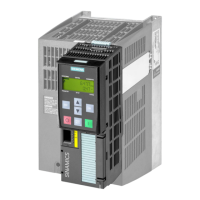
